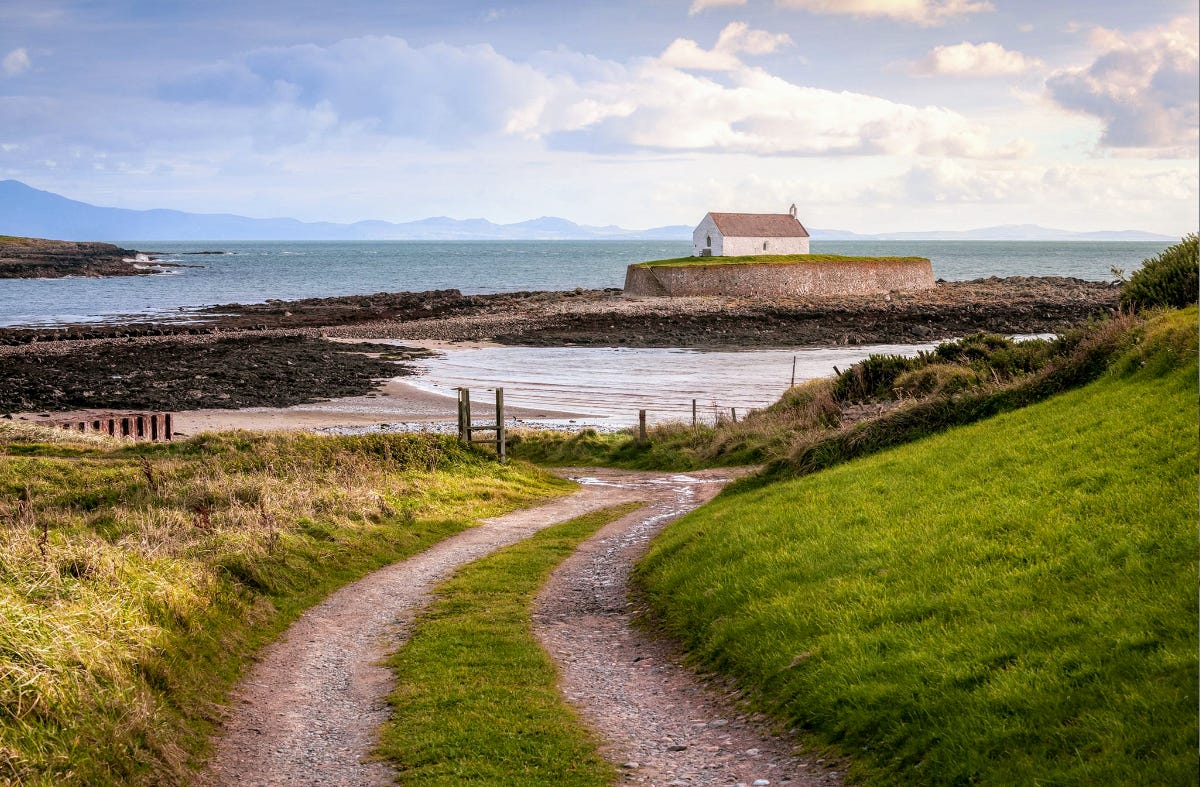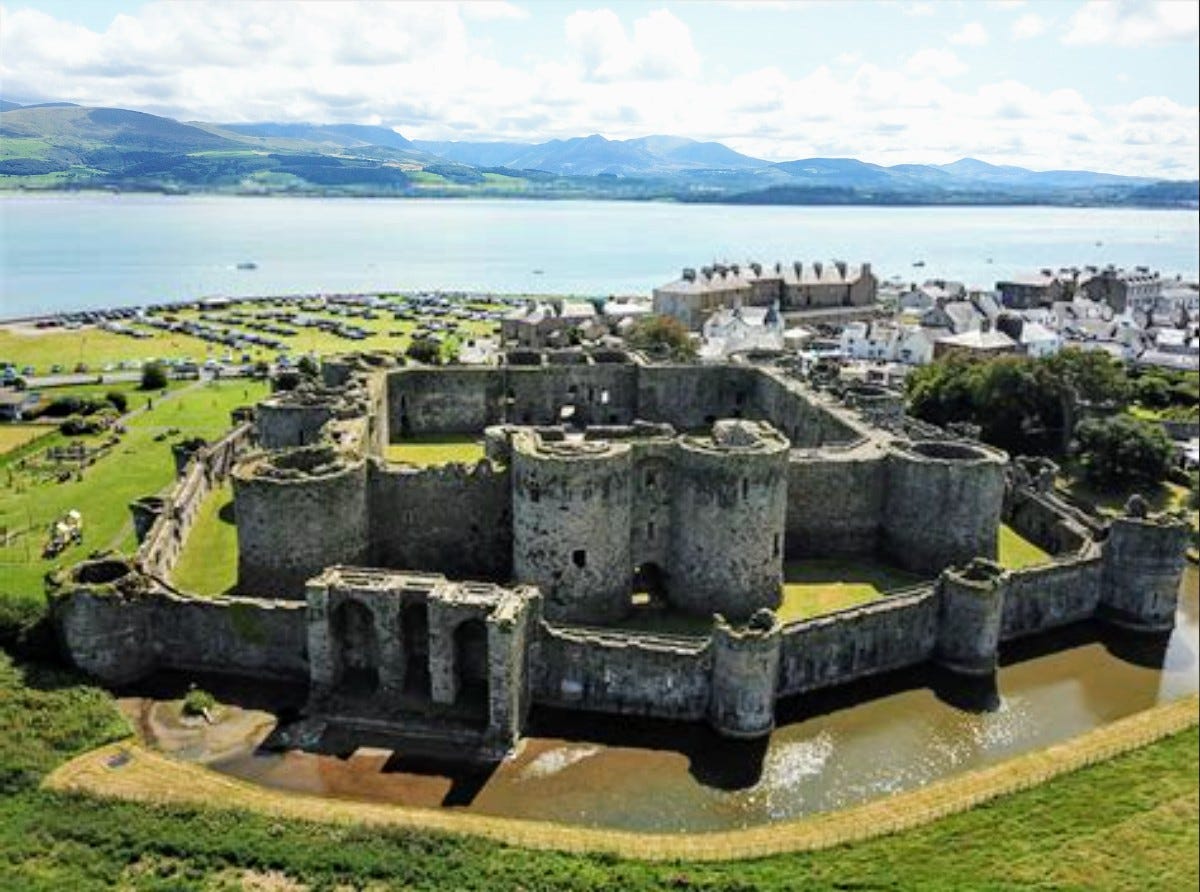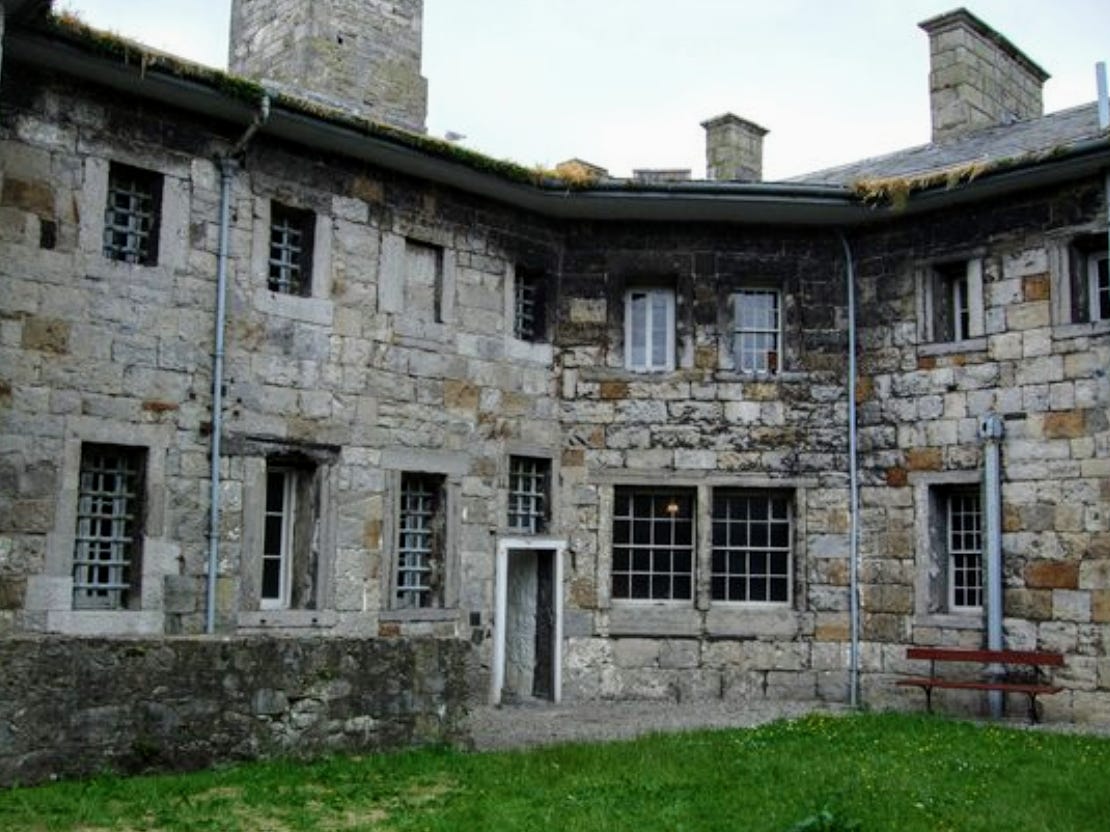In my last post, I delved into the Roman slaughter of the Druids on Celtic Anglesey. Today, I invite you on a journey to discover the joys of this enchanting and holy island, the home of my father and his farming family before him.
Anglesey is the largest island in the Irish Sea and is separated from the mainland by the Menai Straits, with its stunning landscapes ranging from sandy beaches and rocky coastlines to rolling hills and fertile farmland. It has a rich history dating back to the Stone Age evidenced by the burial mound, Bryn Celli Du. It’s a place that promises to captivate your heart and mind, it certainly captures mine whenever I return to its wonderful, windblown landscap
Bryn Celli Du: Stone Age Burial Chamber
The Menai Straits
The Menai Straits is a sea channel, an arresting submerged valley that separates Anglesey from the rest of Wales. It stretches for just over 240 metres from Trwyn Penmon to Abermenai Point and varies in width from about 300 to 1200 metres. It encompasses numerous habitats, ranging from dynamic marine reefs to expansive beaches and lofty sea cliffs.
The island is connected to the mainland by two world famous bridges. Thomas Telford's Menai Suspension Bridge is the first iron suspension bridge of its kind in the world. This was a godsend for the local people who needed to cross to and from Anglesey without the risk of perishing in the dangerous waters of the straits.
Thomas Telford's Iron Bridge
The Britannia Bridge is a tubular bridge of wrought iron for carrying rail traffic that spans the straits between Anglesey and the university city of Bangor. It forms a critical railway link from Chester, an ancient Roman walled city, enabling direct rail travel between London and Holyhead and the sea ferries to Dublin, Ireland a mere 94 nautical miles, just over three hours journey.
The Ancient Place of Welsh Princes: Aberffraw.
The tiny village of Aberffraw stands on the banks of Afon Ffraw (the Ffraw River). It is a village and community on the south west coast of the island and has a population of around six hundred. Aberffraw was the principal seat of the Princes of Gwynedd one of the eight medieval Welsh Kingdoms and the centre of Welsh power. The house of Aberffraw played a crucial role in Welsh history. Although there is no longer evidence of the court, during my many visits to the area I imagine the ghosts of the princes and the political intrigues and cultural life that once thrived there. The princely court or “llys” in medieval times involved wooden buildings within closed compounds, which fell into disrepair over time.
The area around Aberffraw is a delight and renowned for its sand dunes which are home to various plant and insect species. The area is a designated conservation area and a Site of Special Scientific Interest. The Isle of Anglesey Coastal Path passes through the area giving locals and visitors excellent opportunities for walking and enjoying the stunning landscapes of farmland, coastal heath, salt marshes and foreshore. Much of the area around Aberffraw is designated an Area of Outstanding National Beauty - AONB.
Anglesey is an island of saints. Legend has it that 777 saints are buried in its earth. St Cwfan’s church known as “the little church in the sea” stands on a tiny island, which can only be reached at low tide.
Saint Cwyfan’s: The Church in the Sea
The church dates back to the 12th century although it is thought there had been a church on the island from 7th Century. There was a controversy in the parish in 1766 when the Bishop of Bangor appointed Thomas Bowles, an Englishman, as the parish priest of Trefdraeth, which included St Cwyfan’s. The problem was that only five of the five hundred parishioners spoke English. An ecclesiastic court ruled that the Reverend Bowles be replaced by a Welsh speaker. However, he had already been granted ecclesiastical freehold so the Welsh parishioners had to wait until he died in 1773 and Welshman Richard Griffith took over, much to the relief of the worshippers.
Beaumaris Town and Castle
Originally a Viking settlement, Beaumaris is a charming little town and a must for history lovers with its mix of medieval, Georgian, Victorian and Edwardian architecture. The town grew when Edward 1st of England conquered Wales through a combination of military force, strategic planning and political manipulation. He used political pressure to isolate the Welsh princes and undermine their support. He demanded homage and submission and when they refused, he used it as justification for military action. He comissioned the building of Beaumaris Castle in 1295 as part of his “ Iron ring” fortification around the North Wales coast to include castles in Caernarfon, Conwy and Harlech. The castle is built on a marsh hence its name: beaux marais or fair marsh.
Beaumaris Castle with a View of Snowdonia
A delightful way to spend time in Beaumaris is a stroll along the seafront, taking in the pier and marina with stunning views over the Menai Straits and Snowdonia. You can walk through charming streets with picturesque cottages painted in pastel colours or call into one of the lively cafes, restaurants and pubs after shopping in the varied independant shops or gazing into the pretty windows filled with smart interior pieces and quality ladies wear. The town also boasts its own yacht club.
Beaumaris Seafront
Beaumaris Gaol
Beaumaris Gaol remains unaltered over time and is full of memories and secrets. It was built in 1829. Although the conditions appear harsh, in its day it was seen as a humane improvement on earlier prisons. Criminals were kept in chains and were often whipped and isolated in the misery of the punishment cell for up to three days. The prison has the last working penal treadmill in Britain which was used to pump water up to the top of the building for prisoners. The Courthouse Museum is also preserved in its original condition.
Two prisoners were hanged in Beaumaris. William Griffiths was hanged in 1830 for the attempted murder of his wife. He did not go to his death without a fight; his gaolers had to break down his door; he had barricaded himself in his cell in a futile attempt to escape his fate, he was then dragged and half carried to the gallows. Just over thirty years later in 1832 Richard Rowlands was executed for murdering his father-in-law. He protested his innocence to his last breath. Legend has it he cursed the nearby church clock from the gallows, saying that his innocence would be proven if the four faces of the clock would never show the same time. Both men were buried in a lime pit within the walls of the prison.
South Stack Lighthouse
This lighthouse is an iconic landmark located on a small island off the northwest coast of Anglesey called South Stack Island or Ynys Lawd. The lighthouse acts as a waymark and orientation light for ships crossing the Irish Sea to and fro from the ports of Holyhead and Dun Laoghaire, Ireland. Built in 1809 it has historical beauty and charm and is a piece of maritime history. To get to the lighthouse you have to descend 400 steps and cross a bridge, the way lighthouse keepers had done before. The tower is roughly 28 metres tall and offers stunning views of the surrounding coastline and the Irish Sea. Visitors can tour the engine room and and climb to the top of the lighthouse.
South Stack Lighthouse
Penmon Point and Puffin Island.
Penmon Point is home to Trwyn Du, one of the five working lighthouses around the island. It is a sea fishing hot spot and you can even find crabs in the rock pools. It is a great place to spot wildlife, with outstanding views across the mainland, the Great Orme in Landudno and Puffin island or Ynus Seiriol, which is a major draw for birdwatchers. The key species of birds are Razorbills, Guillemots, Kittiwakes, Shags and Cormorants as well as variable numbers of Puffins
Puffins on Puffin Island
I have often spotted seals basking in the sun on Puffin Island or closer to the shore. The island’s diverse and nutrient-rich waters provide a perfect environment for two species of dolphin. The Bottlenose dolphins are known for their playful behaviour, often leaping out of the water to the delight of onlookers. The smaller Common Dolphins can be seen in pods gracefully gliding through the waves. If you are lucky enough to visit Penmon Point, make sure to take your binoculars.
Penmon Point with Puffin Island in the Distance
It is time to leave Anglesey, a place where the sea whispers ancient tales and the landscape breathes a timeless serenity. Leaving it's shores, I carry with me the echo of the wind and the enduring spirit of an island I love and know so well, feeling the pull of generations who have gone before me.
Hwyl Rwan, Ynys Môn














Thanks for reading and liking it😄